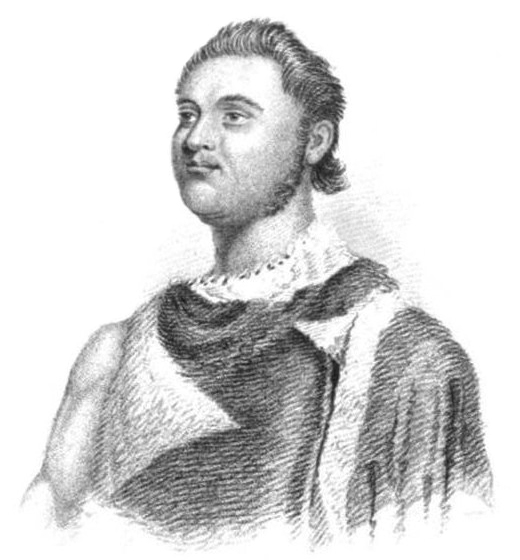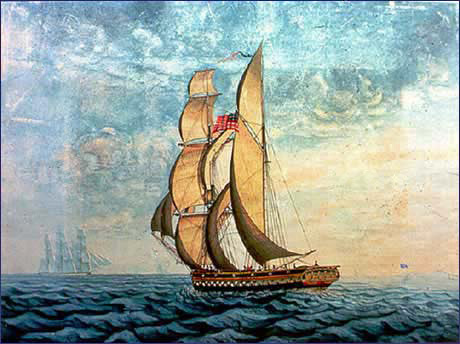|
Governors Of Oahu
The Governor of Oahu ( haw, Kiaaina o Oahu) was the royal governor or viceroy of the island of Oahu in the Kingdom of Hawaii. The Governor of Oahu resided at Honolulu and was usually a Hawaiian chief or prince and could even be a woman. The governor had authority over the island of Oahu and Honolulu, the kingdom's capital, and it was up to the governor to appoint lieutenant governors to assist them. The governor had replaced the old alii aimokus of the islands, but sovereignty remained with the king. The island governors were under the jurisdiction of the Ministers of the Interiors. Either the governor or the monarch had the power to call in foreign assistance in time of troubles. This occurred a few times, including the uprising of the Emmaites in 1874 when John Owen Dominis called for British and American assistance. Neither the governor nor monarch called for foreign assistance in January 1893 when John L. Stevens sent American troops into Honolulu. Role In the 1840 Constit ... [...More Info...] [...Related Items...] OR: [Wikipedia] [Google] [Baidu] |
Governor
A governor is an administrative leader and head of a polity or political region, ranking under the head of state and in some cases, such as governors-general, as the head of state's official representative. Depending on the type of political region or polity, a ''governor'' may be either appointed or elected, and the governor's powers can vary significantly, depending on the public laws in place locally. The adjective pertaining to a governor is gubernatorial, from the Latin root ''gubernare''. Ancient empires Pre-Roman empires Though the legal and administrative framework of provinces, each administrated by a governor, was created by the Romans, the term ''governor'' has been a convenient term for historians to describe similar systems in antiquity. Indeed, many regions of the pre-Roman antiquity were ultimately replaced by Roman 'standardized' provincial governments after their conquest by Rome. Plato used the metaphor of turning the Ship of State with a rudder; the Latin ... [...More Info...] [...Related Items...] OR: [Wikipedia] [Google] [Baidu] |
John Adams Kuakini
John Adams Kiiapalaoku Kuakini (1789–1844) was an important adviser to Kamehameha I in the early stages of the Kingdom of Hawaii. He was responsible for contributing to the infrastructure among other changes in the Kona District during this era. Family life He was born about 1789 with the name ''Kaluaikonahale''. His father was Keʻeaumoku Pāpaiahiahi, an alii (noble) from the island of Hawaii, and his mother was NāmāhānaiKaleleokalani, the widow queen and half-sister of the late king of Maui, Kamehameha Nui. Historian Samuel Kamakau later makes the contradictory claim that Kaʻiana was Kuakini's father and also claimed he was a ''poʻolua'' child (possessing two head or father). Keʻeaumoku became a fugitive from King Kahekili II of Maui. Escaping to Hana, the family moved back to Hawaii island and lived on Kahaluu Bay. He was the youngest of four important siblings: sisters Queen Kaahumanu, Kamehameha's favorite wife and later became the powerful Kuhina nui, Kalāku ... [...More Info...] [...Related Items...] OR: [Wikipedia] [Google] [Baidu] |
Kuakini
John Adams Kiiapalaoku Kuakini (1789–1844) was an important adviser to Kamehameha I in the early stages of the Kingdom of Hawaii. He was responsible for contributing to the infrastructure among other changes in the Kona District during this era. Family life He was born about 1789 with the name ''Kaluaikonahale''. His father was Keʻeaumoku Pāpaiahiahi, an alii (noble) from the island of Hawaii, and his mother was NāmāhānaiKaleleokalani, the widow queen and half-sister of the late king of Maui, Kamehameha Nui. Historian Samuel Kamakau later makes the contradictory claim that Kaʻiana was Kuakini's father and also claimed he was a ''poʻolua'' child (possessing two head or father). Keʻeaumoku became a fugitive from King Kahekili II of Maui. Escaping to Hana, the family moved back to Hawaii island and lived on Kahaluu Bay. He was the youngest of four important siblings: sisters Queen Kaahumanu, Kamehameha's favorite wife and later became the powerful Kuhina nui, Kalākua ... [...More Info...] [...Related Items...] OR: [Wikipedia] [Google] [Baidu] |
Liliha
Kuini Liliha (–1839) was a High Chiefess ( aliʻi) and noblewoman who served the Kingdom of Hawaii as royal governor of Oʻahu island. She administered the island from 1829 to 1831 following the death of her husband Boki. Early life She was born in 1802. Her father was Ulumāheihei Hoapili, a son of Kameʻeiamoku, one of the ''nīʻaupiʻo'' (highest noble rank) twin brothers. Her mother was High Chiefess Kalilikauoha of Maui, who was the daughter of King Kahekili II of Maui and his half-sister bride Luahiwa. Some genealogists say Liliha was only adopted by Hoapili, but the practice known as '' hānai'' was considered a bond as strong as a blood relation. According to them, she was the biological daughter of Koakanu, a son or grandson of Kaolohaka-a-Keawe, one of the many issues of Keaweʻīkekahialiʻiokamoku; and his wife High Chiefess Loeau. Her name means "heartsick queen" in the Hawaiian language. She had no siblings. Liliha was initially married to Kahalaiʻa Lua ... [...More Info...] [...Related Items...] OR: [Wikipedia] [Google] [Baidu] |
Kuini Liliha
Kuini Liliha (–1839) was a High Chiefess (aliʻi) and noblewoman who served the Kingdom of Hawaii as royal governor of Oʻahu island. She administered the island from 1829 to 1831 following the death of her husband Boki. Early life She was born in 1802. Her father was Ulumāheihei Hoapili, a son of Kameʻeiamoku, one of the ''nīʻaupiʻo'' (highest noble rank) twin brothers. Her mother was High Chiefess Kalilikauoha of Maui, who was the daughter of King Kahekili II of Maui and his half-sister bride Luahiwa. Some genealogists say Liliha was only adopted by Hoapili, but the practice known as ''hānai'' was considered a bond as strong as a blood relation. According to them, she was the biological daughter of Koakanu, a son or grandson of Kaolohaka-a-Keawe, one of the many issues of Keaweʻīkekahialiʻiokamoku; and his wife High Chiefess Loeau. Her name means "heartsick queen" in the Hawaiian language. She had no siblings. Liliha was initially married to Kahalaiʻa Luanuʻ ... [...More Info...] [...Related Items...] OR: [Wikipedia] [Google] [Baidu] |
Boki Kamauleule
Boki may refer to: * The Boki people of Nigeria * The Boki language * Boki, Nigeria, a Local Government Area of Nigeria People * Boki (surname) * Boki (Hawaiian chief) (before 1785–after 1829), Royal Governor of Oahu * Boki Milošević (1931–2018), Serbian clarinetist * Boki Nachbar Boki may refer to: * The Boki people of Nigeria * The Boki language * Boki, Nigeria, a Local Government Area of Nigeria People * Boki (surname) * Boki (Hawaiian chief) (before 1785–after 1829), Royal Governor of Oahu * Boki Milošević Bož ... (born 1980), Slovenian basketball player * Boki.b (born 1983), Croatian illustrator See also * {{disambiguation ... [...More Info...] [...Related Items...] OR: [Wikipedia] [Google] [Baidu] |
Boki (Hawaiian Chief)
Boki (sometimes Poki, born Kamāuleule) (before 1785–after December 1829) was a High Chief in the ancient Hawaiian tradition and served the Kingdom of Hawaii as royal governor of the island of Oahu. Boki ran a mercantile and shipping business and encouraged the Hawaiians to gather sandalwood for trade. Early life Boki was the son of Kekuamanoha and Kamakahukilani. His father was a chief of Maui and grandson of Kekaulike, King of Maui. He was a younger brother of William Pitt Kalanimoku, but it was rumored that he was a son of Kahekili II. His original name was Kamāuleule ("The one who faints") and his nickname came from a variation of "Boss", the name of Kamehameha I's favorite dog which was a very common name for dogs in Hawaii at the time. Royal governor Boki was appointed Royal Governor of Oahu and chief of the Waianae District by Kamehameha I, and continued in his post under Kamehameha I's son Kamehameha II. Boki and his wife Kuini Liliha (1802—1839) were leadi ... [...More Info...] [...Related Items...] OR: [Wikipedia] [Google] [Baidu] |
Kamehameha III
Kamehameha III (born Kauikeaouli) (March 17, 1814 – December 15, 1854) was the third king of the Kingdom of Hawaii from 1825 to 1854. His full Hawaiian name is Keaweaweula Kīwalaō Kauikeaouli Kaleiopapa and then lengthened to Keaweaweula Kīwalaō Kauikeaouli Kaleiopapa Kalani Waiakua Kalanikau Iokikilo Kīwalaō i ke kapu Kamehameha when he ascended the throne. Under his reign, Hawaii evolved from an absolute monarchy to a constitutional monarchy with the signing of both the 1840 Constitution, which was the first Hawaiian Language Constitution, and the 1852 Constitution. He was the longest reigning monarch in the history of the Kingdom, ruling for 29 years and 192 days, although in the early part of his reign he was under a regency by Queen Kaahumanu and later by Kaahumanu II. His goal was the careful balancing of modernization by adopting Western ways while keeping his nation intact. Early life Kauikeaouli was born at Keauhou Bay, on Hawaii island, the largest isla ... [...More Info...] [...Related Items...] OR: [Wikipedia] [Google] [Baidu] |
Lydia Namahana
Lydia ( Lydian: 𐤮𐤱𐤠𐤭𐤣𐤠, ''Śfarda''; Aramaic: ''Lydia''; el, Λυδία, ''Lȳdíā''; tr, Lidya) was an Iron Age kingdom of western Asia Minor located generally east of ancient Ionia in the modern western Turkish provinces of Uşak, Manisa and inland Izmir. The ethnic group inhabiting this kingdom are known as the Lydians, and their language, known as Lydian, was a member of the Anatolian branch of the Indo-European language family. The capital of Lydia was Sardis.Rhodes, P.J. ''A History of the Classical Greek World 478–323 BC''. 2nd edition. Chichester: Wiley-Blackwell, 2010, p. 6. The Kingdom of Lydia existed from about 1200 BC to 546 BC. At its greatest extent, during the 7th century BC, it covered all of western Anatolia. In 546 BC, it became a province of the Achaemenid Persian Empire, known as the satrapy of Lydia or ''Sparda'' in Old Persian. In 133 BC, it became part of the Roman province of Asia. Lydian coins, made of silver, are amon ... [...More Info...] [...Related Items...] OR: [Wikipedia] [Google] [Baidu] |
Namahana Piʻia
Lydia Nāmāhāna Kekuaipiʻia (c. 1787 – 1829 ) was a wife of King of . She was the daughter of Keʻeaumoku Pāpaʻiahiahi, and her sisters and were also Kamehameha's wives. Kamehameha ... [...More Info...] [...Related Items...] OR: [Wikipedia] [Google] [Baidu] |
Kamehameha II
Kamehameha II (November 1797 – July 14, 1824) was the second king of the Kingdom of Hawaii. His birth name was Liholiho and full name was Kalaninui kua Liholiho i ke kapu ʻIolani. It was lengthened to Kalani Kaleiʻaimoku o Kaiwikapu o Laʻamea i Kauikawekiu Ahilapalapa Kealiʻi Kauinamoku o Kahekili Kalaninui i Mamao ʻIolani i Ka Liholiho when he took the throne. Early life Kamehameha II was born in the month of Hanaiaʻeleʻele (corresponding to November) 1797 in Hilo, on the island of Hawaiʻi, the first born son of Kamehameha I with his highest-ranking wife Keōpuolani. It was originally planned that he would be born at the Kūkaniloko birth site on the island of Oʻahu but the Queen's sickness prevented travel. Given in care to his father's trusted servant Hanapi, who took the child to rear him in the lands of Kalaoa in Hilo Paliku, he was taken back, after five or six months, by his maternal grandmother Kekuʻiapoiwa Liliha because she felt he was not getting ... [...More Info...] [...Related Items...] OR: [Wikipedia] [Google] [Baidu] |




.jpg)
_-_Kamehameha_III%2C_1825.jpg)

